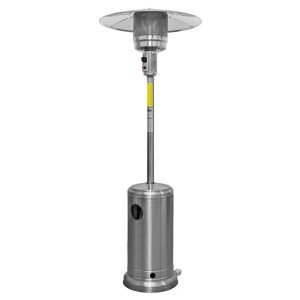15 Inspiring Facts About Buy Patio Heating That You Never Knew

The Essential Guide to Buying Patio Heating: Everything You Need to Know
As the weather turns cooler, numerous homeowners begin to consider how to extend their outdoor home into the cold months. Patio heating enables relaxing gatherings under the stars, enhancing year-round functionality of outdoor patios, decks, and gardens. This short article will offer an extensive overview of patio heating options, factors to think about when acquiring, and responses to frequently asked concerns.
Kinds Of Patio Heaters
Patio heaters come in different designs and performances, each catering to different user requirements. Here's a breakdown of the most popular options:
1. Propane Patio Heaters
- Description: These portable heaters operate on propane gas canisters.
- Benefits:
- Easy to move and establish.
- Provides instantaneous heat.
- Perfect for bigger outdoor locations.
- Considerations:
- Requires routine refilling of propane tanks.
- Might be restricted by local regulations on outdoor gas appliances.
2. Natural Gas Patio Heaters
- Description: Connected directly to a gas line.
- Benefits:
- No need for filling up; a continuous supply of hot gas.
- Cost-efficient in the long term for frequent usage.
- Considerations:
- Requires professional setup.
- Less portable than propane heaters.
3. Electric Patio Heaters
- Description: Heaters powered by electrical energy.
- Advantages:
- Easy to set up and utilize; simply plug them in.
- Suitable for small gatherings and minimal outdoor areas.
- Factors to consider:
- Less effective than gas heaters; may not heat big areas efficiently.
- Needs access to electrical outlets.
4. Infrared Heaters
- Description: Heaters that use infrared innovation to warm objects and people directly rather of heating the surrounding air.
- Benefits:
- Highly energy-efficient and ecologically friendly.
- Instantaneous heat without waiting.
- Considerations:
- Effectiveness can be restricted by wind.
- Usually more expensive than traditional heaters.
5. Fire Pits and Tabletop Fireplaces
- Description: Open flame units that can also serve as stylish outdoor decor.
- Advantages:
- Multifunctional; provides heat and ambiance.
- Factors to consider:
- Requires constant guidance and maintenance.
- Less efficient heat circulation compared to other heaters.
Factors to Consider When Buying Patio Heaters
Investing in patio heating needs careful consideration to guarantee you buy a system that fulfills your specific needs. Below are key elements to evaluate:
- Size of the Area:
The main consideration is the size of the outdoor space you wish to heat. Bigger outdoor patios may need more powerful heaters or several systems to disperse warmth effectively. - Heating Capacity:
This is measured in BTUs (British Thermal Units). Usually, greater BTU rankings suggest a heater that can create more heat. - Mobility and Placement:
Determine whether you choose a portable solution or a repaired setup. Consider where you prepare to position the heater, and how typically you might need to move it. - Fuel Source:
Evaluate your choice for propane, gas, or electric models based on accessibility and convenience. Each fuel type has associated expenses and considerations. - Security Features:
Opt for models geared up with security functions such as tip-over protection and automatic shut-off. This is crucial when utilizing heaters in outdoor spaces. - Design and Aesthetics:
Choosing an aesthetically appealing heater can improve your outdoor environment. Look for options that complement your existing furniture and design. - Weather Resistance:
If the heater will stay outdoors all year, consider models created to endure different weather aspects such as rain or snow.
Contrast Table of Patio Heaters
| Type | Heat Source | Portability | Rate Range | Pros | Cons |
|---|---|---|---|---|---|
| Propane Patio Heaters | Propane Gas | High | ₤ 100-₤ 400 | Instant heat, portable | Needs refilling, regional regulations |
| Natural Gas Heaters | Gas | Low | ₤ 300-₤ 700 | Constant supply, affordable | Needs setup |
| Electric Patio Heaters | Electrical energy | High | ₤ 50-₤ 300 | Easy to utilize, no fuel needed | Minimal range and heat |
| Infrared Heaters | Electrical energy | Medium | ₤ 150-₤ 500 | Efficient, instantaneous heat | Wind impacts, greater cost |
| Fire Pits/ Fireplaces | Wood/Gas | Variable | ₤ 100-₤ 600 | Decorative, multifunctional | Requires supervision, upkeep |
Frequently Asked Questions About Patio Heating
1. The number of BTUs do I need for my patio?
The variety of BTUs needed depends on the size of your patio. A general guideline is:
- Up to 20 sq ft: 10,000 BTUs
- 20-50 sq feet: 20,000 BTUs
- 50-100 sq ft: 30,000 BTUs
2. Are patio heaters safe to utilize?
Yes, as long as security standards are followed. Look for Fireplaces And Stoves with security features and ensure they are operated in well-ventilated locations.
3. Can electrical patio heaters be used indoors?
It is not recommended to utilize outdoor heaters indoors due to the danger of fire and carbon monoxide gas buildup. Constantly validate producer guidelines.
4. What is the average cost to run a patio heater?
Running costs vary extensively based on the kind of fuel and energy costs in your area. For electrical systems, average usage may cost around ₤ 0.07-₤ 0.30 per hour.
5. How do I keep my patio heater?
Regular upkeep involves clearing out any particles, examining gas connections for leaks, and ensuring that electrical parts are secure and functioning.
Buying patio heating is an excellent method to extend the enjoyment of outdoor spaces well into the cooler months. With many options offered, possible purchasers need to examine their unique needs, space dimensions, and preferred heating techniques. By considering the aspects and comparisons provided in this short article, house owners can make an educated choice and ensure their patio remains a comfortable social center throughout the year.

